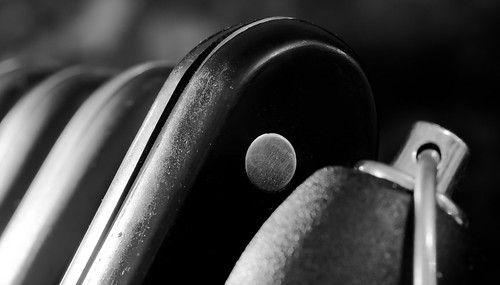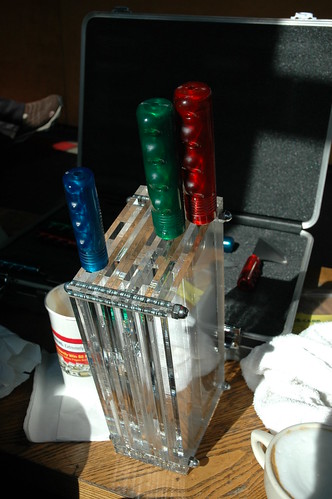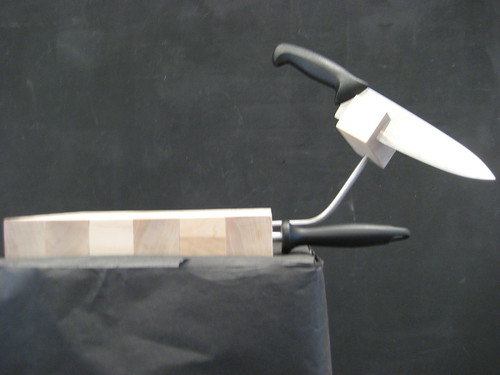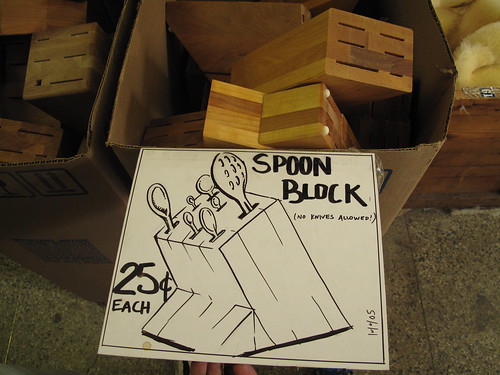Phase Change Materials (PCM) in Textiles
In textile industry, protection from extreme environmental conditions is a very crucial requirement. Clothing that protects us from water, extreme cold, intensive heat, open fire, high voltage, propelled bullets, toxic chemicals, nuclear radiations, biological toxins, etc are some of the illustrations.
Knife Block
Such clothing is utilized as sportswear, defense wear, firefighting wear, bulletproof jackets and other professional wear. Textile products can be made more comfortable when the properties of the textile materials can adjust with all types of environments.
Knife Block
At present, for fulfilling the above requirement Phase Change Materials (PCM) is one such intelligent material. It absorbs, stores or discharges heat in accordance with the various changes in temperature and is more often applied to manufacture the smart textiles.
Phase Change Materials
'Phase Change' is the process of going from one stat to another, e.g. from solid to liquid. Any material that experiences the process of phase change is named as Phase Change Materials (PCM).
Such materials collect, discharge or absorb heat as they oscillate between solid and liquid form. They discharge heat as they transform to a solid state and absorb as they go back to a liquid state. There are three basic phases of matter solid, liquid and gas, but others like crystalline, colloid, glassy, amorphous and plasma phases are also considered to exist.
This fundamental phenomenon of science was initially developed and used for building space suits for astronauts for the US Space Program. These suits kept the astronauts warm in the black void of space and cool in the solar glare. Phase Change Materials are compounds, which melt and solidify at specific temperatures and correspondingly are able to retain or discharge large amounts of energy.
The storage of thermal energy by changing the phase of a material at a constant temperature is classified as 'latent heat', i.e., changing from a liquid state to a solid state. When a PCM experiences a phase change, a huge amount of energy is needed. The most significant characteristic of latent heat is that it involves the transfer of much larger amounts of energy than sensible heat transfer.
Quiet a few of these PCMs change phases within a temperature range just above and below human skin temperature. This characteristic of some substances is used for making protective all-season outfits, and for abruptly changing environment. Fibre, fabric and foam with built-in PCMs store the warmth of body and then release it back to the body, as the body requires it. Since the procedure of phase change is dynamic, the materials are continually shifting from solid to liquid and back according to the physical movement of the body and outside temperature. Furthermore, Phase Change Materials are used, but they never get used up.
Phase Change Materials are waxes that have the distinctive capacity to soak and emit heat energy without altering the temperature. These waxes include eicosane, octadecane, Nonadecane, heptadecane and hexadecane. They all possess different freezing and melting points and when mixed in a microcapsule it will accumulate heat energy and release heat energy and maintain their temperature range of 30-34°C, which is very comfortable for the body.
The amount of heat absorbed by a PCM in the actual phase change with the amount of heat absorbed in an ordinary heating procedure can be evaluated by taking water as a PCM. The melting of ice into water leads to the absorption of latent heat of nearly 335 J/g. If water is further boiled, a sensible heat of only 4 J/g is absorbed, while the temperature increases by one degree. Hence, the latent heat absorption in the phase change from ice into water is about 100 times greater than the sensible heat absorption.
How to assimilate PCMs in fabrics?
The micro encapsulated PCM can be combined with woven, non woven or knitted fabrics.
The capsules can be added to the fabric in various ways such as:
Microcapsules: Microcapsules of various shapes - round, square and triangular within fibres at the polymer stage. The PCM microcapsules are permanently fixed within the fibre structure during the wet spinning procedure of fibre manufacture. Micro encapsulation gives a softer hand, greater stretch, more breathability and air permeability to the fabrics.
Matrix coating during the finishing process: The PCM microcapsules are embedded in a coating compound like acrylic, polyurethane, etc, and are applied to the fabric. There are many coating methods available like knife-over-roll, knife-over-air, pad-dry-cure, gravure, dip coating and transfer coating.
Foam dispersion: Microcapsules are mixed into a water-blown polyurethane foam mix and these foams are applied to a fabric in a lamination procedure, where the water is removed from the system by the drying process.
Body and clothing systems
The needed thermal insulation of clothing systems mainly depends on the physical activity and on the surrounding conditions such as temperature and relative humidity. The amount of heat produced by humans depends a lot on the physical activity and can differ from 100W while resting to over 1000W during maximum physical performance.
Specially, during the cooler seasons (approx 0°C), the suggested thermal insulation is defined in order to make sure that the body is adequately warm when resting. At extreme activity, which is often a case with winter sports, the body temperature rises with enhanced heat production. To make this increase within a certain limit, the body perspires in order to withdraw energy from the body by evaporative cooling. If the thermal insulation of the clothing is decreased during physical activity, a part of the generated heat can be removed by convection, thus the body is not needed expected to perspire so much.
The quality of insulation in a garment in terms of heat and cold will be widely managed by the thickness and density of its component fabrics. High thickness and low density make insulation better. It is observed in many cases that thermal insulation is offered by air gaps between the garment layers.
However, the external temperature also influences the effectiveness of the insulation. The more extreme the temperature, be it very high or very low, the less effective the insulation becomes. Thus, a garment designed for its capability to protect against heat or cold is chosen by its wearer on the expectation of the climate in which the garment is to be worn.
Though, a garment produced from a thick fabric will have more weight, and the freedom of movement of the wearer will be restricted. Clearly then a garment designed from an intelligent fabric, whose nature can change according the external temperature, can offer superior protection. However, such a garment must be comfortable for the wearer.
Temperature change effect of PCMs
PCM microcapsules can create small, transitory heating and cooling effects in garment layers when the temperature of the layers reaches the PCM transition temperature. The effect of phase change materials on the thermal comfort of protective clothing systems is likely to be highest when the wearer is frequently going through temperature transients (ie, going back and forth between a warm and cold environment) or from time to time touching or handling cold objects. The temperature of the PCM garment layers must vary frequently for the buffering effect to continue.
The most obvious example is changing of water into ice at 0° and to steam at 100°. There are many products that change phase near body temperature and are now being integrated in fibres and laminates, or coating substrates, that will alter phase at or near body temperature and so support the equilibrium of the body temperature and keep it more constant. It is for athletes in extreme conditions and people who are involved in extreme sports such as mountaineering and trekking. It is going to be used in industrial applications where people are very mobile, for example, in and out of cool rooms.
Effects on fabrics
When the condensed PCM is heated to the melting point, it absorbs heat energy as it moves from a solid state to a liquid state. This phase change produces a short-term cooling effect in the clothing layers. The heat energy may come from the body or from a warm environment. Once the PCM has totally melted the storage of heat stops
If the PCM garment is worn in a cold environment where the temperature is below the PCM's freezing point and the fabric temperature drops below the transition temperature, the micro encapsulated liquid PCM will come back to a solid state, generating heat energy and a momentary warming effect. The developers assert that this heat exchange makes a buffering effect in clothing, minimize changes in skin temperature and continue the thermal comfort of the wearer.
The clothing layer(s) consisting PCMs must go through the transition temperature range before the PCMs change phase and either produce or absorb heat. Therefore, the wearer has to make some effort for the temperature of the PCM fabric to change. PCMs are transient phenomena. They have no effect in steady state thermal environment.
Active microclimate cooling systems need batteries, pumps, circulating fluids and latest control devices to give satisfactory body cooling, but their performance can be adjusted and made to continue for long period of time. They are, however, costly and complicated. Present passive microclimate devices use latent phase change; either by liquid to gas evaporation of water (Hydroweave), a solid to liquid phase shift by a cornstarch/water gel, or with a paraffin that is contained in plastic bladders.
The liquid evaporation garment is cheaper, but will only give minimum or short-term cooling in the high humid environment found in protective clothing. They must also be re-wetted to revitalize the garments for re-application. The water/ starch gel-type cooling garment is presently preferred by the military, and can offer both satisfactory and long time cooling near 32°F (0 degree Celsius), but it can also feel very cold to the skin and needs a very cold freezer (5°F) to completely recharge or rejuvenate the garment. When completely charged, its gel-PCMs are somewhat rigid blocks, and the garment has limited breathability.
The other paraffin PCM garments are comparatively cheaper, but their plastic bladders can split, thus dripping their contents or leading to a serious fire hazard. In addition, their paraffin PCM melts about 65°F (18°C) and must be recharged at temperatures below 50°F (10°C) in a refrigerator or ice-chest. Their rate of cooling also reduces with time because paraffin blocks are thermal insulators and control the heat that can be transmitted into or out of them. The plastic bladders used to contain the PCM also strictly limit airflow and breathability of the garment, thus reducing their comfort.
Uses of PCM
Automotive textiles
The scientific theory of temperature control by PCMs has been deployed in various ways for the manufacturing of textiles. In summer, the temperature inside the passenger compartment of an automobile can increase significantly when the car is parked outside. In order to regulate the interior temperature while driving the car, many cars are equipped with air conditioning systems; though, providing adequate cooling capacity needs a lot of energy. Hence the application of Phase Change Material technology in various uses for the automotive interior could offer energy savings, as well as raising the thermal comfort of the car interior.
Apparel active wears
Active wear is expected to provide a thermal equilibrium between the heat produced by the body while performing a sport and the heat released into the environment. Normal active wear garments do not satisfy these needs always. The heat produced by the body in laborious activity is often not discharged into the environment in the required amount, thus resulting in thermal stress situation. On the other hand, in the periods of rest between activities, less heat is produced by the human body. Considering the same heat release, hypothermia is likely to occur. Application of PCM in clothing supports in regulating the thermal shocks, and thus, thermal stress to the wearer, and supports in increasing his/ her efficiency of work under high stress.
Lifestyle apparel - elegant fleece vests, men's and women's hats, gloves and rainwear.
Outdoor sports - apparel jackets and jacket linings, boots, golf shoes, running shoes, socks and ski and snowboard gloves.
From genuine uses in space suits and gloves, phase change materials are also used in consumer products.
Aerospace textiles
Phase Change Materials used in current consumer products primarily were made for application in space suits and gloves to protect astronauts from higher temperature fluctuations while performing extra-vehicular activities in space.
The usefulness of the insulation stems from micro encapsulated Phase Change Materials (micro-PCMs) primarily created to make warm the gloved hands of space-strolling astronauts. The materials were accepted ideal as a glove liner, to support during temperature extremes of the space environment.
Medical textiles
Textiles having Phase Change Materials (PCMs) could soon find uses in the medical sector. To raise the thermo-physical comfort of surgical clothing such as gowns, caps and gloves. In bedding products like mattress covers, sheers and blankets. A product, which helps the effort to stay the patient warm enough in an operation by giving insulation tailored to the body's temperature.
Other uses of PCM
Phase Change Materials are at the moment being used in textiles, which include the extremities: gloves, boots, hats, etc. Various PCMs can be selected for various uses. For example the temperature of the skin near the torso is about 33°C (91°F). Though, the skin temperature of the feet is nearly 30 -31 °c. These PCM materials can be useful down to 16°C, enough to ensure the comfort of someone wearing a ski boot in the snow. They are increasingly applied in body-core protection and it will shift into the areas of blankets, sleeping bags, mattresses and mattress pads.
PCM Types
Standard phase change materials are generally a polymer/carrier filled with thermally conductive filler, which changes from a solid to a high-viscosity liquid (or semi-solid) state at a certain transition temperature. These materials conform well to irregular surfaces and possess wetting properties like thermal greases, which considerably decrease the contact resistance at the distinctive interfaces. Because of this composite structure, phase change materials are capable of surviving against mechanical forces during shock and vibration, safeguarding the die or component from mechanical damage. Moreover, the semi-solid state of these materials at high temperature determines issues linked to "pump-out" under thermo-mechanical flexure.
When heated to a targeted transition temperature, the material considerably softens to a near liquid-like physical state in which the thermally conductive material slightly expands in volume. This volumetric growth makes the more thermally conductive material to flow into and replace the microscopic air gaps existed in between the heat sink and electronic component. With the air gaps filled between the thermal surfaces, a high degree of wetting of the two surfaces lessens the contact resistance.
In general, there are two types of phase changes materials:
. Thermally conductive and electrically insulating.
. Electrically conductive.
The main dissimilarity between the thermally and electrically conductive materials is the film or carrier that the phase change polymer is coated with. With the electrically insulating material, lowest amount of voltage isolation properties can be achieved.
Analysis of the thermal barrier function of Phase Change Materials in textiles
Producers can now use PCMs to give thermal comfort in a huge range of garments. But to know how much and what kind of PCM to apply, as well as modification of the textile, in order to make a garment fit for its purpose, it is essential to quantify the effect of the active thermal barrier offered by these materials.
The total thermal capacity of the PCM in many products depends on its specific thermal capacity and its quantity. The required quantity can be expected by considering the application conditions, the desired thermal effect and its duration and the thermal capacity of the specific PCM. The structure of the carrier system and the end-use product also affects the thermal efficiency of the PCM, which has to be measured with respect to the material selection and the product design.
Prospect of PCM
The main challenge in developing textile PCM structure is the method of their use. Encapsulation of PCMs in a polymeric shell is an evident selection, but it adds stiff weight to the active material. Efficient encapsulation, core-to-wall ratio, out put of encapsulation, stability during application and incorporation of capsules onto fabric structure are some of the technological aspects being measured.
Though PCMs are being promoted in various types of apparel and connected products, the applications in which they can really work are limited. As superior test methods are developed for PCMs, makers of PCM materials and garments will have to further cautiously target the markets in which their products do work well.
Conclusion
Since a huge amount has been invested in research and development in these areas in the developed counties, it is expected that very soon all-season outfits will be mass-produced. For example, in Britain, scientists have designed an acrylic fibre by integrating microcapsules covering Phase Change Materials. These fibres have been used for producing lightweight all-season blankets.
Many garment making companies in USA are now producing many of such garments, like thermal underwear and socks for inner layer, knit shirt or coated fleece for insulating layer; and a jacket with PCM interlines for outer layer, beside helmets, other head gears and gloves. Such clothing can maintain warm and comfortable temperatures in the extreme of both weathers. There is no doubt that textile which integrate PCMs will find their way into several uses in the near future.
Pcm In Textiles
Knife Block
Dec 18, 2011 11:07:39

Click for larger image and other views
 >> Click here to update Christmas prices for Wusthof 17 Slot Storage Block, Walnut <<
>> Click here to update Christmas prices for Wusthof 17 Slot Storage Block, Walnut <<
Christmas Sales Wusthof 17 Slot Storage Block, Walnut Feature
- Color: Walnut
- Rubberized base for secure storage
- Half moon slot hold shears, fork or knife
- Steak knife slots
- A safe knife storage solution
Christmas Sales Wusthof 17 Slot Storage Block, Walnut Overview
The Wusthof 17 slot storage block holds 2 cooks knives, 6 steak knives and the half moon slot will hold a shear, fork, or a knife. Safely store your knives in a safe and convenient storage block.
SAVE NOW on Christmas Sales Offers below!
Available In Stock. |
| This Christmas Wusthof 17 Slot Storage Block, Walnut ships for FREE with Super Saver Shipping. |
|

Limited Offer Today!! Wusthof 17 Slot Storage Block, Walnut Christmas and Cyber Monday 2011 Deals
Hdtv Tuner Box Halloween Decorations Houston










